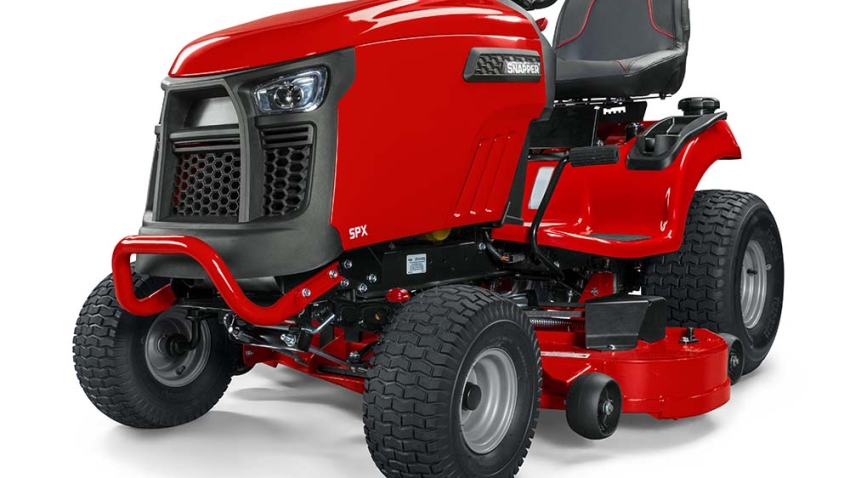
Troubleshooting Tips: Fixing a Non-Starting Lawnmower
Initial Checks for a Non-Starting Lawnmower
Inspecting the Fuel Quality and Tank
Check your fuel. If it’s brown or sticky, it’s stale. Drain the old fuel safely, refill with fresh gas. Make sure the fuel tank is not empty before starting.
Checking the Mower Deck and Removing Debris
Look under the mower. Remove large clumps of grass and debris that block the blade. Make sure the deck is free of clogs that could stop the mower.
Examining the Air Filter Condition
Dirty or clogged air filters stop engines from starting. Replace paper filters or clean foam ones after 25 hours of engine use. Ensure filters are dry before reinstalling.
Evaluating the Spark Plug for Issues
A faulty spark plug could be why your mower won’t start. Unplug it, clean it if dirty, and screw it back tight. Replace it if problems persist.
Fuel System Maintenance
Maintaining your lawnmower’s fuel system is crucial for a smooth start and operation. Ensuring that fuel can flow freely to the engine will prevent a lot of start-up issues.
Assessing and Cleaning the Fuel Filter
A blocked fuel filter might be the culprit when your lawnmower doesn’t start. The filter may have dirt or debris, restricting gas from reaching the engine. First, locate your mower’s fuel filter. Gently disconnect it and see if fuel flows through. If not, it might be time to replace it. Some mowers might not have a filter; check your manual. Use fuel stabilizers to keep your gas clean longer.
Ensuring the Fuel Cap Vent is Clear
The fuel cap vent must be open to prevent vacuum pressure that hinders fuel flow. If your mower starts then stops suddenly, check the fuel cap. It should have a small hole to let air in, balancing the pressure. If it’s plugged, clearing the vent may solve the issue. If problems continue, replacing the fuel cap might be necessary.
Regular checks on these two components can save you time and hassle as you prepare your mower for the cutting season.

Regular maintenance tasks to keep a lawnmower in good working condition
To keep your lawnmower running smoothly and efficiently, regular maintenance is key. Here are some essential tasks:
Before Each Mowing Session:
- Check the Oil Level: Ensure the oil level is sufficient.
- Inspect the Fuel: Make sure the fuel tank is full and the fuel is fresh.
- Examine the Spark Plug: Check for wear and damage, and replace if necessary.
- Inspect the Air Filter: Clean or replace a dirty air filter.
- Check the Blade: Ensure the blade is sharp and free of debris.
Seasonal Maintenance:
- Spring:
- Change the Oil: Fresh oil ensures optimal engine performance.
- Clean the Undercarriage: Remove any grass clippings and debris.
- Sharpen the Blade: A sharp blade provides a clean cut and prevents scalping.
- Inspect the Belts: Check for wear and tear and replace if needed.
- Lubricate Moving Parts: Apply a light lubricant to moving parts to reduce friction.
- Fall:
- Clean the Mower Thoroughly: Remove all grass clippings and debris.
- Drain the Fuel Tank: To prevent fuel degradation over winter.
- Add Fuel Stabilizer: If storing the mower with fuel, add a fuel stabilizer to prevent gumming.
- Change the Oil: This ensures a clean engine for the next season.
- Store the Mower Indoors: Protect the mower from the elements.
Additional Tips:
- Read the Owner’s Manual: Refer to the manual for specific maintenance instructions.
- Wear Protective Gear: Always wear safety glasses, gloves, and sturdy footwear when working on your lawnmower.
- Avoid Overloading the Engine: Don’t cut too much grass at once.
- Keep the Mower Deck Clean: Regularly clean the underside of the mower deck to prevent grass buildup.
By following these maintenance tips, you can extend the life of your lawnmower and ensure it performs optimally season after season.

Safety and Mechanical Systems
Ensuring the safety and proper functioning of your lawnmower’s mechanical systems is essential for it to start and operate correctly.
Verifying the Safety Release Mechanism
Most lawnmowers have a mechanism that must be engaged for the engine to start. This is often a bar on the handle, known as the safety release. Before trying to start your mower, always check that this safety bar is fully engaged. If it’s not, or if it’s damaged, your mower won’t start. Inspect the mechanism’s cable to make sure it’s not loose or broken. A free-moving cable is a sign of a healthy mechanism.
Inspecting the Flywheel Brake Engagement
The flywheel is an important part of the engine that helps regulate timing and smooth operation. The flywheel brake stops the engine quickly when you release the safety bar. Make sure the brake is properly engaged. If you’re having trouble starting the mower, and the cord is hard to pull, the brake may be too tight or not releasing. Look for obstructions and make sure the brake pad is making full contact with the flywheel. If the brake’s key sheared, this might be due to hitting something while mowing and may need a replacement. Checking these components will prevent start-up issues and ensure safe use of your lawnmower.
Troubleshooting Tips
- Start with the Basics: Always begin by checking the fuel level and spark plug.
- Listen for Clues: Pay attention to any unusual noises, such as clicking or grinding.
- Use a Spark Plug Tester: This tool can help diagnose ignition issues.
- Clean the Mower: Remove grass clippings and debris that can interfere with operation.
- Consult the Owner’s Manual: Refer to the manual for specific troubleshooting steps and maintenance tips.
Uncommon Issues That Prevent Mower Start
Sometimes, the common fixes don’t solve the issue of why your lawnmower won’t start after winter. Here are a couple of less typical problems that can interfere with your lawnmower’s operation.
Considering Ignition Switch Problems
An overlooked cause could be the ignition switch. This switch starts the engine once turned. If faulty, it won’t trigger the needed response to fire up the engine. Check if the switch feels loose or doesn’t click. A replacement may be necessary if it doesn’t engage properly.
Addressing Potential Water in the Fuel Line
Water in the fuel line can block the fuel’s path to the engine. This results in failure to start. If you suspect water contamination, drain the fuel system. Replace with fresh fuel and monitor for any changes. If draining doesn’t work, a professional may need to clean or repair the carburetor.

Step-by-Step Troubleshooting Guide
- Check the Fuel Level:
- Ensure the gas tank is at least ¼ full.
- If the fuel is old, drain it and refill with fresh, high-quality gasoline.
- Inspect the Spark Plug:
- Remove the spark plug and check for damage, carbon buildup, or a worn electrode.
- Use a spark plug gap tool to adjust the gap to the manufacturer’s specifications.
- Replace the spark plug if necessary.
- Clean the Air Filter:
- Remove the air filter cover and inspect the filter for dirt and debris.
- Clean a reusable filter with soap and water or replace a disposable filter.
- Test the Spark Plug:
- Connect a spark plug tester to the spark plug wire.
- Pull the starter cord and observe the spark. A strong, blue spark indicates a healthy ignition system.
- Check the Carburetor:
- If the engine is flooded, let it sit for a few minutes to allow the excess fuel to evaporate.
- Clean the carburetor or replace it if necessary.
- Inspect the Starter Cord:
- Ensure the recoil spring is intact and functioning properly.
- Lubricate the starter mechanism with a light oil.
When to Seek Professional Repairs
While many lawn mower issues can be addressed with DIY solutions, there are times when professional help is required. Knowing the signs that indicate expert intervention can save you time and prevent further damage to your lawn mower.
Recognizing Signs That Indicate Professional Help
When your troubleshooting efforts don’t result in a running lawnmower, consider these warning signs:
- Encountering black smoke even after checking and correcting potential fuel and air filter issues.
- Noticing an excessive use of oil or gas despite proper maintenance and new spark plugs.
- Hearing unusual knocking sounds in the engine which suggests internal damage.
- Feeling excessive vibration or a shaking mower, indicating loose or misaligned parts.
These symptoms suggest problems that are often too complex for home repair.
Understanding When It’s Beyond DIY Fixes
Recognizing when a problem is beyond your DIY abilities is important for several reasons:
- Safety concerns: Working on complex engine issues without expertise can be dangerous.
- Risk of further damage: Incorrect repairs could cause more harm to the mower.
- Cost-effectiveness: A professional can often diagnose and fix the problem more economically.
- Time-saving: An expert may resolve the issue faster than trial-and-error DIY methods.
If you’ve gone through all the steps discussed in this blog and the lawnmower still won’t start, it’s likely time to seek professional assistance.





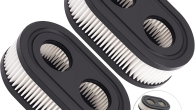
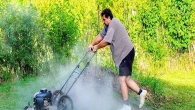
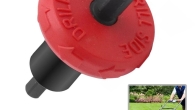
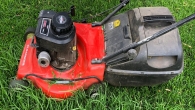
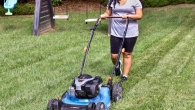


Leave a Reply